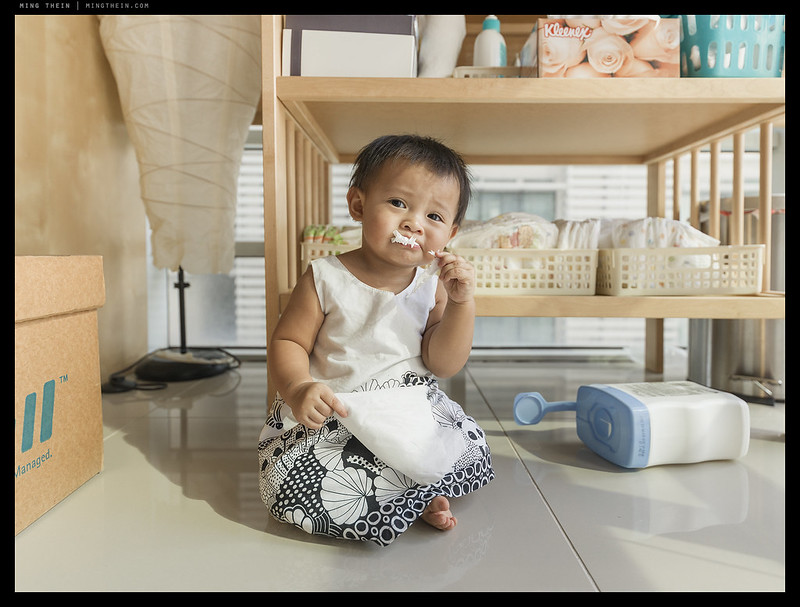
Everything must be evaluated before we have expectations of it
A few months ago, I explained why I believe there is no such thing as an absolute decisive moment; and examined how my own point of reference has shifted over time – both of these posts lead to some discussions in the comments over the whole question of why we seem to shoot better when taken out of our usual environments. I think that answer is fairly simple, and has to do with the same underlying principles of subject isolation: if something looks different, it will stand out, and if we can observe/see it, we can notice, compose for and photograph it. But the first part of that flow – the ‘standing out’ – can only happen if we either train ourselves to continually and consciously evaluate every portion of a scene, or we are thrust into a place where there is no familiar frame of reference so our minds cannot subconsciously pattern recognise and dismiss. The real question for a photographer is: how can we control this to some extent?
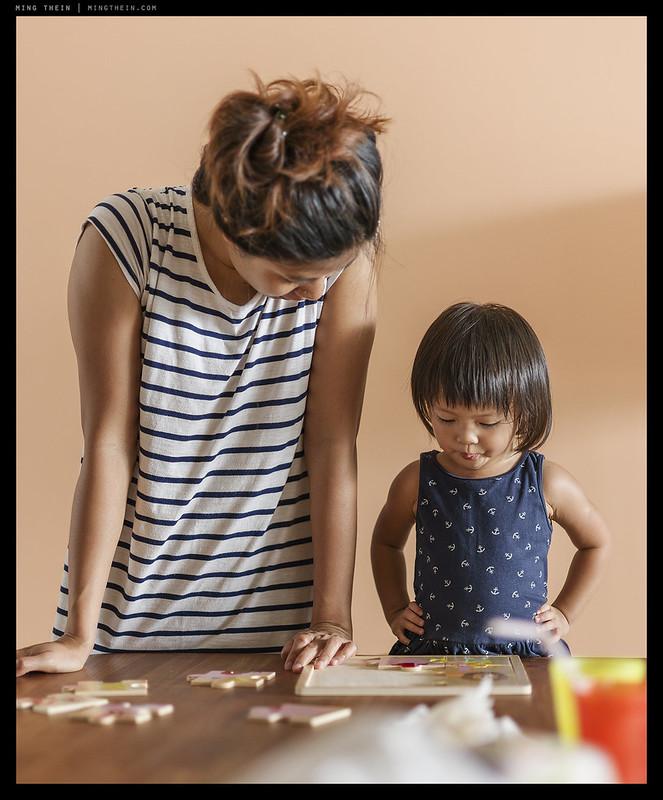
What exists before pattern recognition? Conscious evaluation, of course.
Pattern recognition is something that operates at what I think of as a semi-subconscious level: we notice things, and can choose to pay more conscious attention or not. A good example of this is if we are interested in say, cars, then we start noticing what’s on the roads around us. (It is often said that once you buy something, you tend to see it everywhere around you.) But if we are taking the bus in a foreign country, then we probably are paying acute attention to the details in the buses to make sure we don’t get on the wrong one, rather than what kinds of cars are used as taxis. This is an evolved coping mechanism: if our conscious mind had to continually evaluate every single element in our immediate environments as though we were seeing it for the first time, we’d land up overwhelmed or incapable of doing anything else. It is for this reason that new environments seem to be more intense or actively different than the one we came from – our brains have to sample to see what can be boxed into the familiar category (along with its attendant properties; for instance, a lamp post is a lamp post functionally and mostly form-wise in every country) – and what has to be treated differently.
That which qualifies for ‘treated differently’ inevitably represents some of the local differences between places; it’s almost always these differences that are what gets picked up on by travel photographers and subsequently emphasised – and even stereotyped. Soon we land up with a cliche, and an images that reflect that, themselves becoming no different from the rest of the images from that place – for example, a camel in front of the Pyramids, or a baguette-carrying person in Paris. To me, this is a bit lazy: we have let somebody else do the observing and evaluating for us, and consequently, landed up making a boring image that’s no different to the expectations of everybody else. Point number one: take nothing for granted when you travel; evaluate everything as though you are seeing it for the first time in person, which is probably not far from the truth anyway. Practically, it means that for your preplanning, either you look at a lot of images from those locations – or none at all. The first is so that you have such a wide spread nothing sticks; the second is to make it easier for you to respond to and record your own impressions.
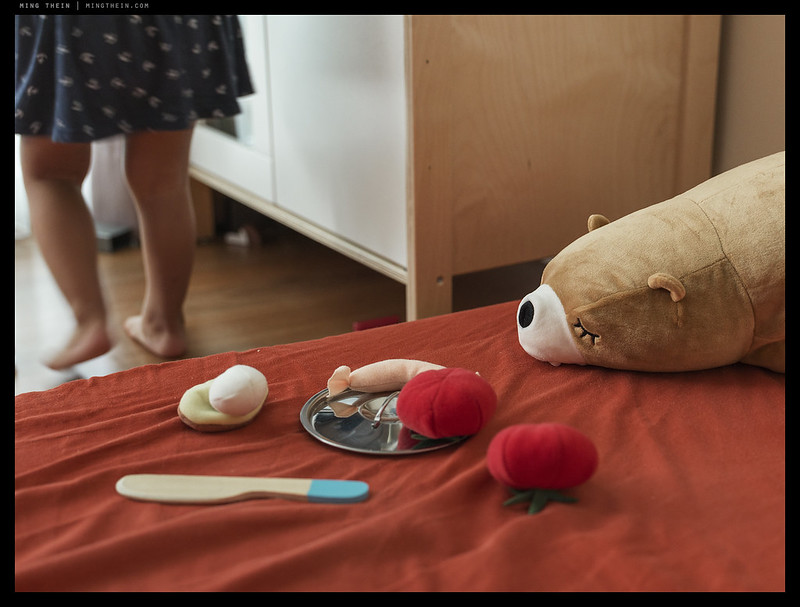 //embedr.flickr.com/assets/client-code.js
//embedr.flickr.com/assets/client-code.js
Kindergarten murder scene
But few of us can travel all the time, and even if we can, your subconscious responds by insulating you one level higher up: you stop observing very much at all. If you ask a businessperson who regularly travels if they feel inspired or excited when they step off a plane, you’ll probably get a no. I personally find that the more I travel, the harder I have to try to see new things: especially if it’s a place where I’ve been before. Assuming you aren’t so familiar with the place you are jaded (difficult if you are not there all the time, because there are still environmental changes that can work in your favour to provoke differences) – a typical flow during a photographic trip is the first few days start off with intense visual overload; you shoot everything and anything that seems to be interesting or different, and then towards the end of the trip your frame of reference has adjusted enough that you’re no longer reacting on a hair trigger, but instead some conscious evaluation and pre-curation is taking place before you hit the shutter. Most of my best images from any trip are made on the last day – up to 50%. Not shooting for the first couple of days and just observing can help quite a bit – both in terms of semi-acclimatisation and curation later. I’d still carry a camera, though – it’s entirely possible you may come across one or two scenes that really are worth recording and subsequently unrepeatable.
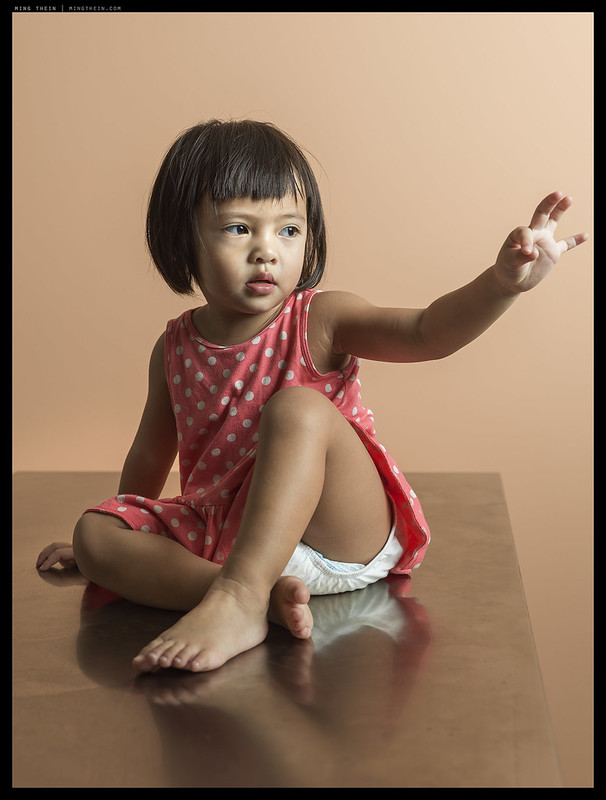
Not different. Begone, temptation
Since becoming a parent, I’ve observed this behaviour on a longer scale in my own shooting habits: we have a subject we encounter daily, but is also changing and developing quickly – so the subject itself isn’t really the same. And the rate of change is fast enough that you’re consciously aware of it. A similar reason is probably at the core of both why we are fascinated by human documentary and photographing our own friends and families – without this, the rate of anything changing is too slow to be interesting. Yet my average number of images has decreased from 100 a month in the first few months to perhaps 10-20 now – does that mean the subject is less interesting, or that I’ve become overly used to it? Yes and no, I think; to some degree the rate of change has slowed down somewhat, so there isn’t so much to document or new environments to put my daughter into.
The challenge then becomes noticing when something changes: in this case, in Sophie’s behaviour. To make sense later, and to adequately serve their purpose as mnemonics, we need to have sufficient context (i.e. storytelling) that our memories can reconstruct the rest of the situation at a later date. This is an important point to staying continually inspired when photographing in your own hometown or familiar environment: observe the changes. This way, we’re firstly not trying to fight human nature by forcing ourselves to waste time and brain power on something that might genuinely not be interesting to anybody (for whatever reason) – but since we will notice changes anyway, stop and take a moment to evaluate whether they might be photographically interesting, and if so, you might as well make an image. I for one would have never thought the change of parenting would result in a change in the way I observe the world – both because you can see how the human mind develops, and because it forces you to consider your own habits? MT
__________________
Visit the Teaching Store to up your photographic game – including workshop videos, and the individual Email School of Photography. You can also support the site by purchasing from B&H and Amazon – thanks!
We are also on Facebook and there is a curated reader Flickr pool.
Images and content copyright Ming Thein | mingthein.com 2012 onwards. All rights reserved
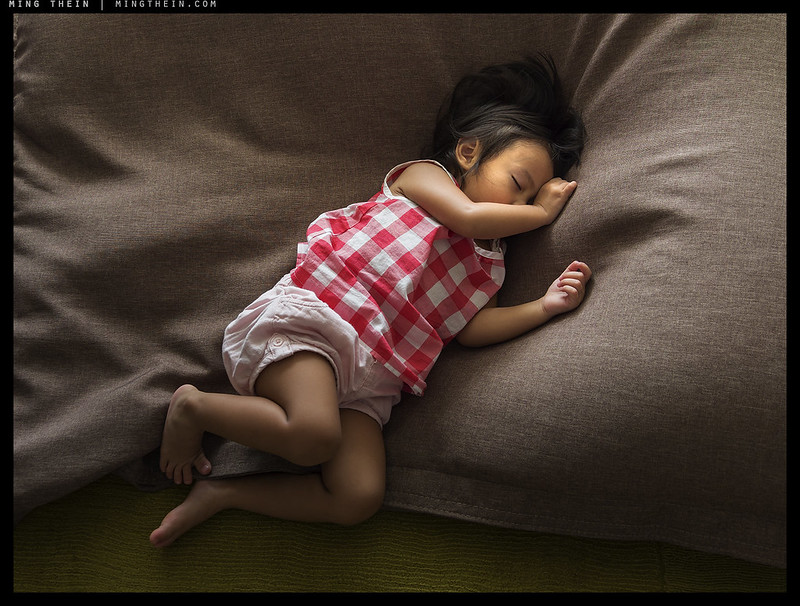
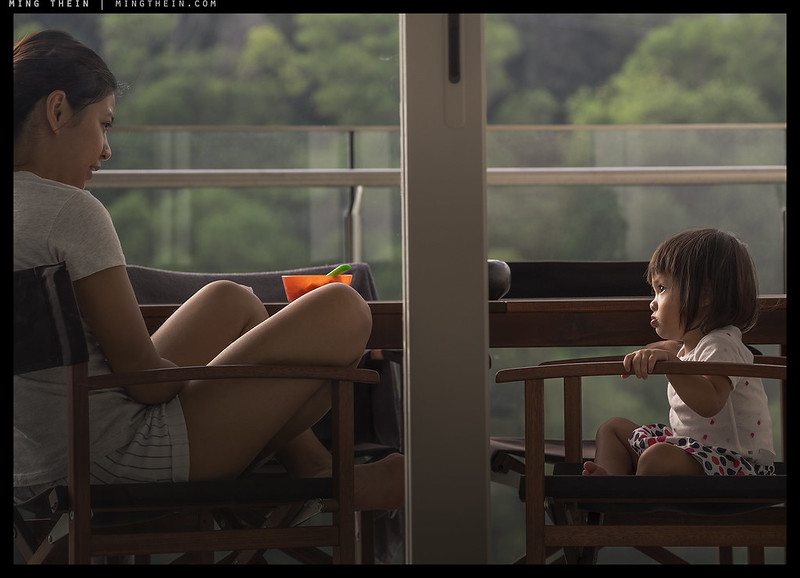





Fascinating. “Yes” to practically all of it. The reason I haunt your blog, Ming, is that you are so brilliant, and have so much to pass on to other photographers who are eager to learn more – thank you for all the insights.
The one thing where we part is where you suggest that you didn’t expect parenting to change the way you observe the world – because that”s exactly what I would have expected it to do. I know it’s rude to peek – but for me, the sight of a woman breast feeding her baby is the most beautiful thing you can ever see. I can sleep through earthquakes – I know I can – I’ve done it! – but I cannot sleep if there’s a baby crying. Children change you completely, unless you’re made of granite and should never have had them in the first place.
Evidence? – why, all the photos you’ve included in this article – and many others, too. 🙂
agree – there is no alternative to pure time.
Good article!!!
I find myself in your shoes these days as my two toddlers aren’t changing as much. In another comment you mentioned light as the one agent independent of spatial arrangement. Because of this, photographing them indoors, where the light and compositions are finite, feels so constrained. Getting my kids outdoor as much as possible has been my goal not just as a parent that wants them to learn to love and celebrate nature, but also selfishly because the photos are better 😛
Agreed; at this time of the year our annual atmospheric haze from Indonesia burning its forests seems to be back, meaning we try to stay inside as much as possible – everything smells burnt and leaves a nasty irritation in your throat. 😦
dear Ming,
This is my first comment in blog ……..it is really beautiful images…..
Thanks!
In an earlier message, I asked if you have a favorite photo. You responded No. For me, that iconic Ming photo is one of Sophie as an infant, on her tummy on the floor, head raised and looking directly into the camera. In the shadowy background is Mom with a gentle smile of perhaps satisfaction or bemusement. Must be the Grandfather in me coming out! And again, many thanks for the education you and your site has given me.
Interesting – it’s one of my favorites too but more because of the emotional connection with the subject and all of the other associations that come with it; as a photo (if it weren’t my kid) it’s nothing special and possibly a bit too commercial if anything…
I’ve been photographing the local pond for the last few years. I go whenever I can regardless of whether the light is “good” or not. I have been standing, or sitting, or kneeling, within a strip of land that’s maybe 15 feet long and a few feet deep for all but a few of the thousands of pictures I’ve taken there.
It’s made me a better observer, a better photographer, and a better human being. Also, it’s impressed on me the truly fractal nature of reality.
A lot of the pictures are in this gallery: http://abeolson.flyingdodostudio.com/The-Natural-World/The-Pond/ although I haven’t added any of the shots from the last month or so. (Also, they are all processed using what I learned from Mings Photoshop workflow videos. Thanks Ming!)
In my past life, as a musician who did probably 90% improv, I worked using an idea similar to “going in empty”. It works as well for photography as it did for music.
My pleasure! A question in return, though: do you ‘go in empty’ to the pond, too? Or have you been so many times there are some preconceived expectations that are almost impossible to get rid of?
Initially, I was going with the idea of shooting the birds. I wanted to learn how to do that and the pond offered a good location to practice. But, I was also prepared for interesting and unexpected opportunities to appear.
This is kind of like playing off a head sheet. You have the bare bones of a song there in front of you on paper, but it’s so bare that you *have* to create a lot, maybe most, of it on the spot. And, listening and reacting to what’s going on around you is the only way it can happen. It’s not a good idea to have in mind really organized thoughts about what you intend to play because you either break the music trying to force your preconceived ideas in, or you end up never playing, waiting for the “perfect” moment to come that’ll allow you to “naturally” work in the ideas you brought from before you started playing.
For the past year or so, I just grab my camera and go. I sit down and watch and listen for a while until I’m feeling the rhythm of what’s happening at the pond at that time and when I start seeing things to shoot, I do. Sometimes, something new is unavoidable, like the day that seemingly every frog in the pond was suddenly big enough to be moving around and croaking. Other times, it’s quiet and not much is happening so I return to previous images and try out similar ideas under different conditions or with different approaches. Sometimes the ducks just don’t want to fly around and I really want to shoot some flying birds. That can be a challenge, but what I do is stop waiting for the ducks to fly and go look and listen for something I haven’t noticed before. There’s *always* something new to find. And there’s, nearly, always some flying creature that’s smaller and faster than the ones I am comfortable shooting. So I work on shooting them.
Some day, I will probably end up being the guy who shoots fleas!
Man-made environments are harder because there’s often someone whose job it is to keep things essentially unchanged through time. They are rarely 100% effective though. And, the light changes constantly.
Love the conversations that you foster here. Thanks very much.
Makes sense – and sounds quite a lot like what I do when I visit one of those static but changing environments, like Tsukiji Market in Tokyo: you sort of have an idea or skeleton of what to expect, and what not to duplicate, and the rest is all fair game…
Very beautiful images.
Thanks!
One of the most valuable photographic lessons I ever learned is to “go out empty” wherever you are (i.e. be it a place you know like the back of your hand, or somewhere you’ve never been before). You have no plans to shoot anything (which is actually pretty difficult), which lets you see what’s actually out there (and when you’re very familiar with a place like we are with our hometowns, for instance, it’s not easy to see “what’s really there” for reasons you have outlined here).
I just got back from a foreign trip and yes, I shot more than I normally would, but once I was taken with a scene I was always thinking to myself “is this going to be a good shot, or am I just shooting for the sake of it, being in a new place?”. I think combining these two approaches – “empty and without preconception” with “strict standards of when to shoot” – generally brings about the best results for me. Others will likely have different ways of doing it.
And, on a different tack, it’s very refreshing to see really good photos of someone else’s children. Facebook tends to bring out everyone’s worst photographer (and maybe that’s part of what you’re referring to in the article too : most people obviously see their children in the best possible light and therefore consider that any picture of their child is going to be a masterpiece!). I imagine your daughter will suffer far less of the embarrassment which inevitably comes when she is older and you bring out the “baby photos” for guests…
Your ‘go out and empty’ is what I think of as my ‘last day syndrome’: when you’re at the tail end of a trip, you inevitably make your best work because you’ve had a) acclimatisation time, so the threshold to trigger interest is a bit higher, and b) you’re unburdened from the pressure or expectations of having to make more images.
I go into family photography knowing that nobody else will find the images interesting except me!
“Facebook tends to bring out everyone’s worst photographer”
I couldn’t agree more. 20 years from now, everyone will have tens of thousands of photos documenting every moment of their childhood, but they’ll all be crappy smartphone snapshots, in lossy JPEG format, often with gaudy filters ruining the color and details. It’s a shame, especially since you can buy a great camera for $500 and learn how to use it for free on YouTube.
There’s an old saying, “familiarity breeds contempt.” I’ve never believed it, preferring “familiarity breeds complacency.” When things are “familiar”, we stop noticing because we don’t need to.
If your cute little girl walked by while you were sitting and reading, you would know she had walked by, but that would be about it. Five minutes later if you were asked what she was wearing, you probably wouldn’t have a clue. If she had walked by carrying a large pair of sharp scissors, you would have leaped up and carefully taken them away from her. First, your mind saw the situation as unfamiliar, which triggered an analysing process, which quickly came to the conclusion that the situation was dangerous.
I think when we are in unfamiliar situations or surroundings, we keep looking and analysing, which triggers the creative process if you have one.
My wife and I live in a beautiful old stone village on top of a hill in Provence. After a number of years, I don’t even see my surroundings, and watch with a smile as tourists from big cities walk around and take photos of everything. (If I visited the city they live in, I would almost certainly be taking a number of pictures). But, if we have a big storm, accompanied by unusual and unfamiliar lighting, out I go, camera in hand.
It seems like the familiarity/complacency habit has a very strong nullifying effect on our creative ability. Many of my favourite photos are of fairly mundane things, but were seen in a different way, (or seen at all), because of the new and strange surroundings encouraging closer observation. Or in other words, really seeing what was there.
Complacency is certainly more accurate – both for visual familiarity and in your example, situational familiarity, too.
Light is the one agent of change that is independent of spatial arrangement – most of the uniquely arresting images come about as you say, with the shock of seeing familiar subjects in unfamiliar presentations (or situations).
good article
Thanks for generating some thought provoking themes here MT.
This process seems most relavent to travel shooting though of course is important right across our practice.
I’m currently in Vancouver for a month. Canada is interesting to a British photographer as it looks like America but feels like home. I’ve been trying to envisage exactly this contradiction, which is challenging as one constantly veers towards the stylistically familiar imagery of Americana, which is not only cliched but also entirely irrelevant of course. It’s truly gratifying then to make an image I’ve not seen before, to feel a freshness in approach and vision and the final result. Therein lies everything for me when shooting in what might be an unfamiliar land but a heavily saturated and shared world of image generation.
Cartier-Bresson worked well into his 80s so I need to continue loving this work for another 40 years or so to match that. Travel and time away from my general practice can drive this, I believe, whilst enabling my return to work to feel newly reinvigorated.
T
The ‘real’ time away bit is what I’m personally struggling with. Travel, yes, actual image making based on pure observation (and to get yourself into the purely observatory phase again) – not so much. That only happens once one has the luxury of no pressure…
Canada: they drive on the wrong side there too, don’t they? (Spoken from a right hand drive/ colonial country resident… 😉 )
It has to be pure time too – digital detox (oops) and days spent unrelated to work. Very hard after so long at the grindstone but it always pays a true dividend as it’s really cleansing and great for idea generation as new projects twist, turn and take shape.
Canada drives on the right alas – I’m certain just to make the lives of visiting Americans easier! Should you never hear from me again, it’ll be due to turning right on a red for sure.
Cheers!
T
I agree – there is no alternative to pure time. Trying to find that is something else entirely…in the last six years, I haven’t had a single day off. Every time I intend to, something inevitably comes up or interrupts…
Right on a red is fine so long as you don’t do it at home 😉
Actually, as a Canadian, I can offer that the reason we drive on the right is that the French were there before the British. They established bases back in the fifteen hundreds, and perhaps had a very forward-thinking chap who decided that in the future, people would drive on the right, as we do in France…….
Nothing to do with ease of connectivity to the US road system? 🙂
It’s simply who made the first automobiles and where the first Canadian owners bought their cars.
Shipped by boat from England or France or driven across the border from Detroit. Roads
Had to be the same on both sides. Really like the photos of your daughter that you’ve shared with us.
Your daughter may seem familiar to you, but the natural light and her positions stand out and seem totally
unique to me.
Makes sense. Thanks!
Mark “Facebook” Zuckerberg published a video about his Jarvis A.I. project in which the automated assistant starts the day by saying roughly, “Today’s Saturday, so you only have five meetings.”
I appreciate working heartily with engagement, productivity, and vitality. Sometimes it’s perhaps tempting to discuss busyness as a badge of honor in our culture, which I’m gradually learning is most probably off balance. (Others seem to promote sloth as a virtue which I’m pretty certain is far off balance in the other direction.)
Ah yes, I know the feeling…though sadly not the AI or the piles of money!
Busyness isn’t a badge of honor. I think it’s an indicator two things – to me at least – masochism, or disorganization…
Dear Ming
Beautiful pictures from a loving father I can tell!
About observing vs. seeing, there is also the barrier imposed by our categorizing through language. I remember a quote I think by Monet “In order to see we must forget the name of the thing we are looking at” and also Ernst Haas observing an apple so intensely that “it became the first apple he had ever seen.”
I took some friends to a place where I often go to photograph and I enjoyed their finding of new subjects and compositions I was not seeing out of familiarity. Now I can see the importance of bringing new eyes to a place, even if they are not my own!
Thanks. I think it goes one level further than that: we need to almost deobjectify the subject to see it from a different (in this case, hopefully unbiased) perspective, which in turn should lead to some unique imagery.
Interesting. Could we go too far? At the end one could say that a picture should about the subject or the subject matter. What I mean is: do we run the risk of creating an image just because it is unique and lose its meaning in the process?
Possibly, but I think it’s much easier to ascribe uniqueness as part of the desirable meaning of an image as opposed to mundanity?